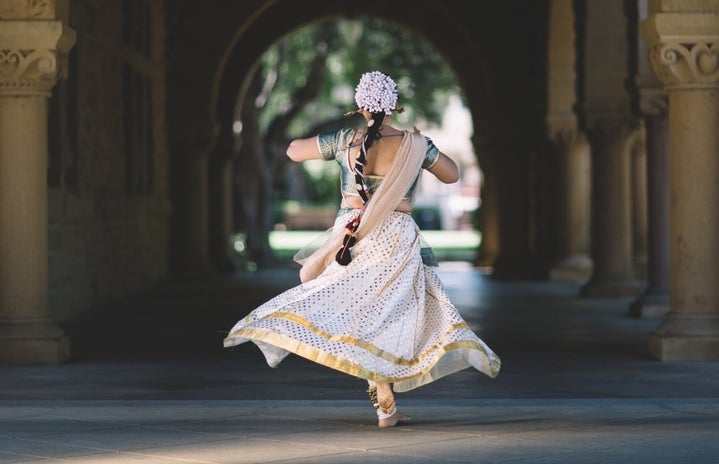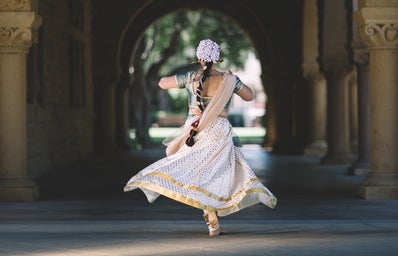Growing up, the majority of my friends in my predominately white schools played soccer, basketball or tennis. I, on the other hand, got my physical activity from a form of classical Indian dance, Kathak, and I loved it. I remember initially being angry at my parents for signing me up for Kathak class when I wanted to be in a regular sports team like my friends were. For my parents, it was important that they give me an opportunity to connect and learn about my Indian heritage. Throughout my college career, I find myself utilizing the skills that being a Kathak dancer for seven years taught me.
One of my favorite aspects about Kathak is its rich history. The name “Kathak” derives from the Sanskrit word “Katha” which means story. Kathak dancers, otherwise known as Kathakars, are considered to be “storytellers.” Kathak features extensive footwork, intense facial expressions, flexible movements and fast spinning. Kathak is usually set to the tune of various instruments such as the tabla, sitar and flute. Kathak stories are typically based on ancient Indian epics.
The Mughal invasion of India influenced Kathak dance, making it the only Indian classical dance to feature Persian elements as well. When the British empire ruled over India, Christian missionaries tried to prevent the spread of Kathak and other classical dance forms as it promoted Hindu ideals. In 1910, the British empire banned Indian dancing in Hindu temples, which resulted in a decline in the spread and practice of Kathak during British rule.
Even though Kathak dancing was banned in temples, families and Kathak gurus (teachers) kept the dance form alive by teaching daughters and sons. The progression of Indian freedom saw an effort among the Indian people to revive their rich culture, including their dance forms. Kathak is now commonly featured in Bollywood cinema.
The “father” of Kathak was Pandit Birju Maharaj who contributed a unique style to Kathak. He extended the creativity of the dance form by weaving in daily life experiences into the dance choreography. He also encouraged group choreography whereas previously Kathak was a solo form. He recently passed away in 2022, but his contributions tremendously impacted Kathak which gave him the title of “father of Kathak.” He once said, “Dance is nature. Listen to your heart. It dances with its own rhythm. The biggest thing that classical dance and music does to you is help attain balance between your mind and soul.”
The biggest lesson Kathak taught me is to embrace my creativity. As a STEM major, it can be easy to ignore my artistic side. Writing and practicing Kathak is one way I express my creativity in college. I urge you to find your creative outlet and embrace it completely.


